





Morphine
Application instruction:
Morphine – narcotic drug with analgeziruyushchy action.
Form of release and structure
Morphine produce in the form of solution for hypodermic introduction 10 mg/ml: transparent, colourless or yellowish (in the syringe tubes on 1 ml, on 20, 50 or 100 syringes in a cardboard pack).
Is a part of 1 ml of solution:
- Active agent: a morphine hydrochloride – 8,56 mg (in terms of anhydrous substance);
- Auxiliary components: эдетат dinatrium (disodium salt of ethylene diamine tetraacetic acid), solution of Acidum hydrochloricum of 0,1 M, глицерол (the glycerin distilled), water for injections.
Indications to use
Morphine is appointed as anesthetic at the expressed pain syndrome which arose for various reasons:
- Injuries;
- Heavy attacks of stenocardia;
- Myocardial infarction;
- Preoperative, operational and postoperative period;
- Pains at malignancies;
- Other states which are followed by severe pains.
Contraindications
Absolute:
- The states which are followed by the expressed oppression of the central nervous system or respiratory depression;
- Paralytic intestinal impassability;
- Convulsive states;
- The increased intracranial pressure;
- Head injuries;
- Alcoholic psychosis and acute alcoholic states;
- Bronchial asthma;
- Cardiac arrhythmias;
- The heart failure caused by chronic diseases of lungs;
- States after carrying out surgical interventions on biliary tract;
- Acute surgical diseases of abdominal organs (before diagnosis);
- Simultaneous use with monoamine oxidase inhibitors, and also for 14 days after their cancellation;
- Hypersensitivity to drug components.
Relative (Morphine should be applied with care in the presence of the following diseases / states):
- Chronic obstructive pulmonary disease;
- Medicinal dependence (including in the anamnesis);
- Suicide bent;
- Alcoholism;
- Cholelithiasis;
- Emotional lability;
- Urethra strictures;
- Epileptic syndrome;
- Surgical interventions on digestive tract, an urinary system;
- Renal or liver failure;
- Hypothyroidism;
- Prostate hyperplasia;
- Serious inflammatory illnesses of intestines;
- General serious condition of the patient;
- Advanced and children's age.
To the feeding and pregnant women, and also in the period of the sorts Morphine it is possible to apply only according to vital indications (because of probability of development of medicinal dependence in a fruit and the newborn).
Route of administration and dosage
Morphine should be entered subcutaneously.
The anesthetizing action develops 10-15 minutes later after introduction, in 1-2 hours it reaches a maximum and remains for 8-12 and more hours.
The doctor selects a drug dose individually on the basis of a condition of the patient and his age:
- Adults: a standard dose – 1 ml of solution (10 mg/ml). The maximum doses make: one-time – 20 mg, daily – 50 mg;
- Children of 2 years: a single dose – 0,1-0,2 mg/kg; it is possible to enter drug each 4-6 hours, a total dose – no more than 1,5 mg/kg;
- Children up to 2 years: a single dose – 0,1-0,2 mg/kg; it is possible to enter drug each 4-6 hours, a total dose – no more than 15 mg.
Side effects
- Cardiovascular system: more often – tachycardia, lowering of arterial pressure; less often – bradycardia; with an unknown frequency – increase in arterial pressure;
- Alimentary system: more often – vomiting and nausea (as a rule, at the beginning of therapy), a lock; less often – spasms in a stomach, anorexia, dryness in a mouth, a spasm of biliary tract, a gastralgia, a cholestasia (in the main bilious channel); seldom – a hepatotoxic (it is shown in the form of dark urine, a pale chair, an ikterichnost of integuments and scleras), at serious inflammatory illnesses of intestines – paralytic intestinal impassability, an intestines atony, toxic megacolon (it is shown in the form of a lock, a meteorism, nausea, spasms in a stomach, vomitings);
- Nervous system: more often – a faint, dizziness, drowsiness, the general weakness, extraordinary fatigue; less often – a tremor, a headache, a depression, a diskoordination of muscular movements, involuntary muscular twitchings, nervousness, paresthesias, confusion of consciousness (it is shown in the form of hallucinations, depersonalization), sleeplessness, increase in intracranial pressure with probability of further disturbance of cerebral circulation; seldom – oppression of the central nervous system, an uneasy dream, at use of high doses – muscle tension (in particular respiratory), at children is concern, paradoxical excitement; with an unknown frequency – dreadful dreams, spasms, exciting or sedative action (in particular at elderly patients), a delirium, decline in the ability to concentration of attention;
- Respiratory system: more often – oppression of a respiratory center; less often – an atelectasis, a bronchospasm;
- Urinogenital system: less often – decrease in a diuresis, a spasm of ureters (it is shown in the form of difficulty and urodynias, frequent desires to an urination), decrease in a potentiality and libido; with an unknown frequency – a bladder sphincter spasm, disturbance of outflow of urine or aggravation of these states at a stenosis of an urethra and a hyperplasia of a prostate;
- Allergic reactions: more often – a hyperemia of the person, goose breathing, face skin rash; less often – urticaria, skin rash, a skin itch, hypostasis of a trachea and person, a fever, a laryngospasm;
- Local reactions: a hyperemia, burning and hypostasis in a solution injection site;
- Others: more often – a dysphonia, the increased sweating; less often – feeling of discomfort, disturbance of clearness of visual perception (including a diplopia), a nystagmus, a miosis, imaginary feeling of good health; with an unknown frequency – a ring in ears, tolerance, medicinal dependence, a withdrawal (it is shown in the form of muscular pains, diarrhea, tachycardia, a mydriasis, a hyperthermia, rhinitis, sneezing, perspiration, yawning, anorexia, nausea, vomiting, nervousness, fatigue, irritability, a tremor, spasms in a stomach, the general weakness, a hypoxia, muscular contractions, a headache, increase in arterial pressure and other vegetative symptoms).
At repeated use of Morphine for 1-2 weeks (in certain cases – 2-3 days) accustoming (it is shown in the form of weakening of the anesthetizing action) and opioid medicinal dependence can develop.
Special instructions
Morphine is applied with care at elderly patients, at diseases of kidneys and a liver, the general exhaustion, insufficiency of a bast layer of adrenal glands. In the reduced doses and under careful observation it is necessary to enter solution along with the drugs operating on the central nervous system including anesthetics, hypnotic drugs, anxiolytic, antihistaminic drugs, antidepressants, neuroleptics and other non-narcotic anesthetics (to avoid suppression of activity of a respiratory center and excessive oppression of the central nervous system).
Morphine should not be combined with narcotic analgetics from group of partial agonists (buprenorphine) and agonists antagonists of opioid receptors (nalbufiny, butorfanoly, tramadoly) because of danger of weakening of an analgesia and a possibility of development of a withdrawal in patients with dependence to opioids.
Analgetic action and undesirable effects of opioid agonists (fentanyl, trimeperidine) are summed up in the therapeutic range of doses with effects of Morphine.
During therapy it is impossible to allow the ethanol use.
In certain cases there can be a tolerance and dependence on drug.
At development of vomiting and nausea its appointment along with fenotiaziny is possible.
For decrease in side effect on intestines it is necessary to use purgatives.
It is impossible to apply Morphine in situations when emergence of paralytic Ilheus is possible (at threat of its development use of drug needs to be stopped immediately).
At patients with alleged heart operation or other surgical intervention with an intensive pain syndrome use of Morphine needs to be stopped in 24 hours prior to carrying out operation. At purpose of therapy further, the mode of dosing should be chosen taking into account weight of operation.
It is necessary to consider that children up to 2 years are more sensitive to effects of opioid analgetics, and at them development of paradoxical reactions is possible.
During therapy it is necessary to be careful at control of motor transport and performance of other potentially dangerous types of activity demanding the increased concentration of attention and bystry psychomotor reactions.
Medicinal interaction
At simultaneous use of Morphine with some medicines there can be following effects:
- Somnolent, sedative, mestnoanesteziruyushchy medicines, drugs for the general anesthesia and anxiolytics: strengthening of their action;
- The muscle relaxants, ethanol, drugs oppressing the central system: strengthening of the depriving of bonuses effect and respiratory depression;
- Buprenorphine (including the previous therapy): decrease in effect of Morphine;
- Mu agonists - opioid receptors (high doses): decrease in respiratory depression;
- Mu agonists - or a kappa - opioid receptors (low doses): strengthening of respiratory depression;
- Barbiturates, especially phenobarbital (systematic use): reduction of expressiveness of analgeziruyushchy effect of Morphine, stimulation of development of cross tolerance;
- Beta adrenoblockers: strengthening of the oppressing action on the central nervous system;
- Dopamine: reduction of analgeziruyushchy effect of Morphine;
- Cimetidinum: strengthening of respiratory depression;
- Other opioid analgetics: respiratory depression, central nervous system, lowering of arterial pressure;
- Chlorpromazinum: strengthening of miotic, sedative and analgeziruyushchy effects of Morphine;
- Derivatives of barbiturates and fenotiazin: strengthening of hypotensive effect and increase in risk of development of respiratory depression;
- Naloxonum: decrease in effects of Morphine, and also the caused drug of oppression of the central nervous system and breath; acceleration of development of symptoms of a withdrawal against the background of drug addiction;
- Naltrexone: acceleration of emergence of symptoms of a withdrawal against the background of drug addiction (symptoms can develop already 5 minutes later after administration of drug, proceed for 48 hours; are characterized by difficulty of elimination); decrease in analgetic, antidiarrheal and antibechic effect of Morphine; elimination of the respiratory depression drug caused by use;
- The medicines reducing arterial pressure (including ganglioblokator, diuretics): strengthening of hypotensive effect;
- Zidovudine: decrease in its clearance because of what the risk of their mutual intoxication increases;
- Drugs with anticholinergic activity, medicines with antidiarrheal action (including loperamide): increase in risk of development of a lock up to intestinal impassability, oppression of the central nervous system and an ischuria;
- Metoclopramidum: decrease in its effect.
Terms and storage conditions
To store in protected from light, the place, unavailable to children, at a temperature up to 15 °C.
Period of validity – 2 years.
Name of drug
Price
Drugstore
During life the average person develops neither more nor less two big pools of saliva.
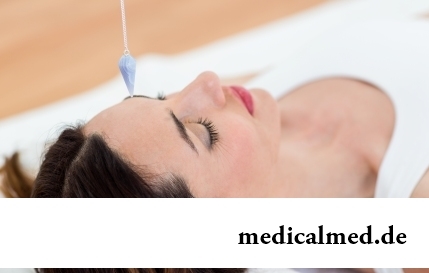
Practice of hypnotic impact on consciousness of the person contains about two millennia. During this time scientists were in time a lot of things узн...
Section: Articles about health
Popular joke that there are no healthy people, and is nedoobsledovanny, most of us considers an honest truth, continually it is necessary to hear that all of us are sick hardly from a school bench. It is hard to say, whether so it actually because...
Section: Articles about health
A lot of things depend on a condition of a backbone in a human body, a backbone - not only a support for a body, it also a receptacle for a spinal cord, that is why malfunctions with a backbone are so dangerous. To treat rachis diseases very difficult and long, it is much simpler and more correct not to bring to a disease. Conforming to the rules provided in this article it is possible to avoid the majority of the problems connected with a backbone including those which are considered to be age, but a cat...
Section: Articles about health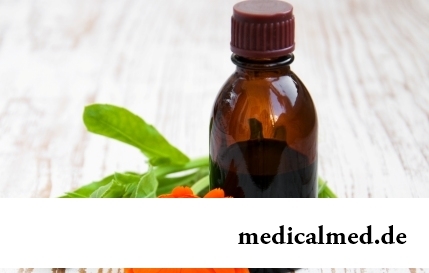
The cosmetics intended for improvement of a condition of skin, nails and hair are used by each woman. Expenses on регуля...
Section: Articles about health
Life does not indulge the modern woman special emotional comfort and carelessness. The fatigue, troubles at work, misunderstanding in a family and various illnesses immediately affect a condition of hair and skin. And to look safe and attractive so хоч...
Section: Articles about health
Cystitis, or inflammation of a mucous membrane of a bladder, this very widespread disease which, owing to some features of a structure of bodies of urinogenital system, women have approximately four times more often than men. Women aged from 20 up to 45 years enter into the main risk group. Cystitis is an illness of a bacterial origin. It can have an acute or chronic current. The second option is dangerous not only a frequent recurrence, серьезн...
Section: Articles about health
The mankind knows that some toxins at intake in the minimum quantities have therapeutic effect...
Section: Articles about health
The pine is one of the most widespread plants of our woods. Its needles and pitch not without reason called by "gallipot" were since ancient times used for strengthening of protective forces of an organism, treatment of avitaminosis, anemia and many other diseases. In recent years wide п...
Section: Articles about health
New year, wedding, birthday, office party – an occasion to drink at the Russian person will always be. How to reduce a negative impact of alcohol by an organism and to avoid a condition of strong intoxication? The most correct council – to refuse the use of alcoholic drinks. Council is true, but not always feasible. We offer several advice which will help you in cases when it is impossible to avoid alcohol intake....
Section: Articles about health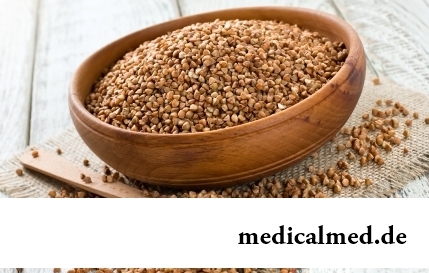
History of cultivation of a buckwheat contains more than five thousand years. Grain which is received from this plant is used for пригото...
Section: Articles about health
It would seem, about it there can be no disagreements: water is necessary for a human body for normal life activity, and about how and when it should be drunk, all know. It turned out that the situation is not absolutely so: for many years occur ве...
Section: Articles about health
The state of health of the person in many respects depends on food. The organism will well function if during food it receive only useful substances, necessary vitamins and microelements. In this case there will be no problems with digestion, with excess weight, and intellectual and physical activity will remain at the high level....
Section: Articles about health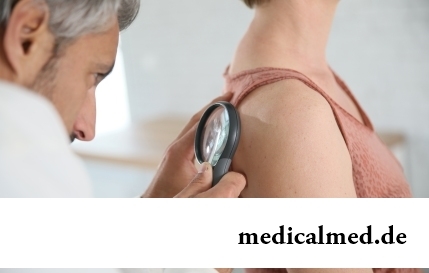
Scientists have no unambiguous opinion on a proximate cause of emergence of a carcinoma cutaneum today. Are precisely established only фа...
Section: Articles about health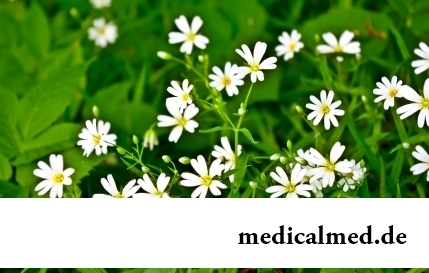
Wood louse – the ordinary-looking unpretentious plant extended in all territory of our country. It quickly expands, and sometimes fills sites, bringing a lot of chagrin to gardeners. Perhaps, they would be upset less if knew that the wood louse is the prices...
Section: Articles about health
Obesity is called a disease of 21 centuries, for the last 100 years the number of the people suffering from excess body weight considerably increased. Statistically, on Earth already about 1,5 billion corpulent people, and 500 million from them have the extreme degree of completeness negatively affecting quality and duration of their life. What served as the reason of growth of stout persons on the planet? How not to get to their ranks? Let's consider five main premises for increase in body weight in conditions современнос...
Section: Articles about health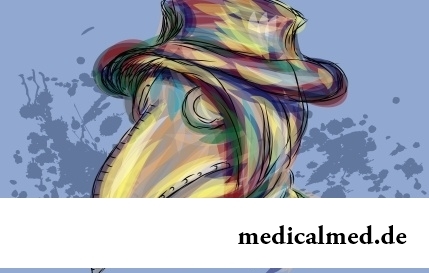
History of mankind contains several tens of epidemics whose emergence was compared by eyewitnesses and historians to doomsday. With...
Section: Articles about health
Health and attractiveness - eternal values, pursuing which people often use the most unusual ingredients and technicians. Let's consider 11 most exotic and sometimes not most pleasant Spa procedures to which the person in a pursuit for beauty agrees...
Section: Articles about health
Use of medicinal plants in therapy is urgent today, more than ever. The drugs made of curative herbs cannot replace completely modern synthetic drugs, but their use becomes frequent serious help in simplification of a course of many illnesses and improvement of quality of life of chronic patients....
Section: Articles about health
Sugar - the digestible refined product which is not of special value for an organism of the modern person. Use...
Section: Articles about health
Ability of an organism to resist to adverse environmental factors (to impact of temperature drops, humidity and pressure, to the attacks of causative organisms, etc.) directly depends on what the person eats. Business here not only in, that C...
Section: Articles about health
Eyes – unique body on the structure thanks to which the person obtains about 80% of information on the world around: about a form, color, size, the movement, and also many other parameters of objects or phenomena. But whether much we know about the most valuable sense body which, according to the scientist Sechenov, provides us about one thousand various feelings a minute? Let's consider 10 most surprising facts about eyes and sight....
Section: Articles about health
The summer of this year in Russia was very ambiguous. Regions suffered from a merciless heat, from pouring rains, from times...
Section: Articles about health
Not everyone can brag of the shining Hollywood smile. Even the person who is regularly visiting the stomatologist and watching of oral cavities over health periodically has problems: enamel of teeth darkens under the influence of some products, on it I accumulate...
Section: Articles about health
Life activity of one-celled fungi of the sort Candida, related to yeast is a proximate cause of development of candidiasis (milkwoman). Normal these microorganisms are a part of the microflora living in an oral cavity and intestines of most of people and also in a female genital tract. The pathological phenomena are observed when fungi begin to breed too violently. At the same time there is an inflammatory process affecting mucous membranes and which is shown very nepr...
Section: Articles about health
All like to sing. Small children with pleasure are engaged in a vocal, not especially thinking of hit in a melody. Adults most often...
Section: Articles about health
With age in a human body harmful substances collect. We receive them with food and water, at inhalation of the contaminated air, reception of medicines, use of household chemicals and cosmetics. A considerable part of toxins accumulates in a liver, osnovno...
Section: Articles about health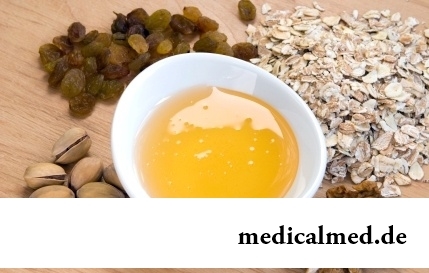
Let's begin with the fact that a separate illness which is called "adjournment of salts", just does not exist. In practice this household name of disbolism leading to development of a number of diseases. Pathological process consists that in an organism there is an accumulation of salts of uric acid (as a rule, owing to failure of a water salt metabolism or insufficiently effective work of secretory system)....
Section: Articles about health

